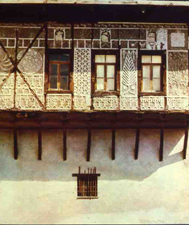AGA KHAN PROGRAM FOR ISLAMIC ARCHITECTURE
Course 4.611/4.613:
17- Traditional Residential Architecture: (Click on images to enlarge)
Vernacular Architecture: The word is derived from the Latin word verna, domestic slave. In architecture, it was widely used form the 1970s on to designate indigenous, architect-less, low-tech, and mostly un-urban residential architecture.
Possible influences on the formation of vernacular types:
- Climate and locale.
- Social structure and religious beliefs.
- Technological know-how.
- Economics.
- Taste, precedents and models.
Case Studies: The varieties in vernacular types in a single country:Syria:
- Riwaq-type houses and liwan-type houses: variations on a theme.
- Domical adobe houses in Northern Syria (Khan Shaykhun): rural innovations or representatives of a missing precedent.
- The hosh house: Rural collective housing
Vernacular Housing types in Syria: axonometric, plan, section, and context |
The requirements of security and defensibility
- Ksours of the Berbers in South Morocco: singular ksar, a fortified village.
- Kasbah of the Berbers in South Morocco: fortified courtyard house.
Aerial view of a fortified ksar in the Vallee du draa, Morocco |
A ksar on the top of a mountain between Fez and Marrakesh, Middle Atlas |
The spread of a traditional type beyond the confines of a single region:
- Upper-class, multi-storied urban dwellings based on the Yemeni models which spread across the area of coffee trade in the Red Sea into Jeddah in Saudi Arabia and Rosetta in Egypt.
- Brick tower-houses of Rashid (Rosetta), the Delta, Egypt.
- Adobe tower-houses of Jeddah, Saudi Arabia: The Nourwali House.
Exterior facade of a tower house in Rashid, Rosetta |
Nourwali House exterior street facade |
Persistence of a type throughout the economic scale and the climatic spectrum:
Iranian adobe houses with courtyard:
- Covered and open courtyard houses in Zavareh
Plan of a covered courtyard house in Zavareh |
Views of the courtyard facades in an open courtyard house in Zavareh |
Plan of an open courtyard house in Zavareh |
- Open courtyard: Boroujerdi House, Kashan
View of a courtyard in the Boroujerdi House |
Dome and multiple windcatchers above the main hall in the Boroujerdi House |
Regional variations of a single type based on construction techniques:
Anatolian houses:
- First floor stone construction
- Second floor, built of light material, projects over corbels. Plan is sofa type.
An example of an Anatolian house; Safranbolu, 19th century |
Anatolian house plans and elevations |
- Ashlar stone 1st floor + wood frame and bricks 2nd floor: Apolyut, Bursa.
- Undressed stone with wood rafters 1st floor + Wood 2nd floor: Antalya.
- Ashlar stone 1st floor + plastered wood frame 2nd floor: Anamur and Safranbolu.
- Wood shingles 1st and 2nd floor: Eyup.
Ashlar + wood house, Apalyut village |
Ashlar and plaster wood frame, Safranbolu |
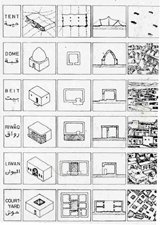
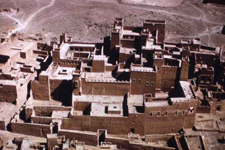
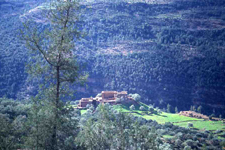
 3 Hse on Port Said St, ext N Facade-17.jpg)
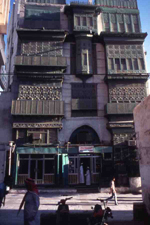
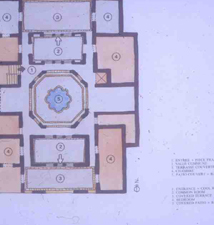
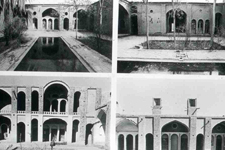
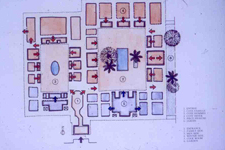
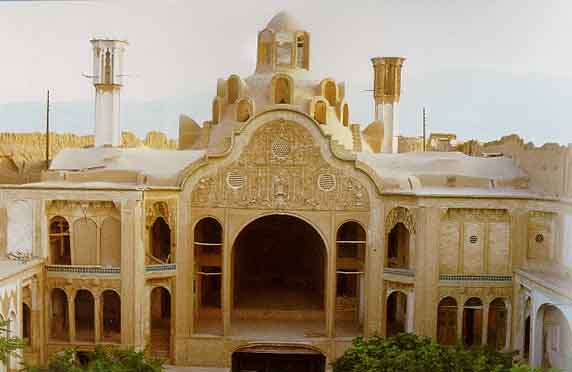
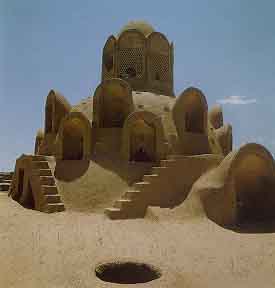
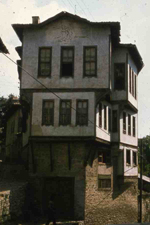
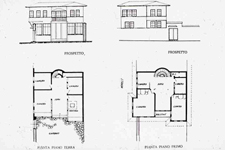
 ext facade-17.jpg)
